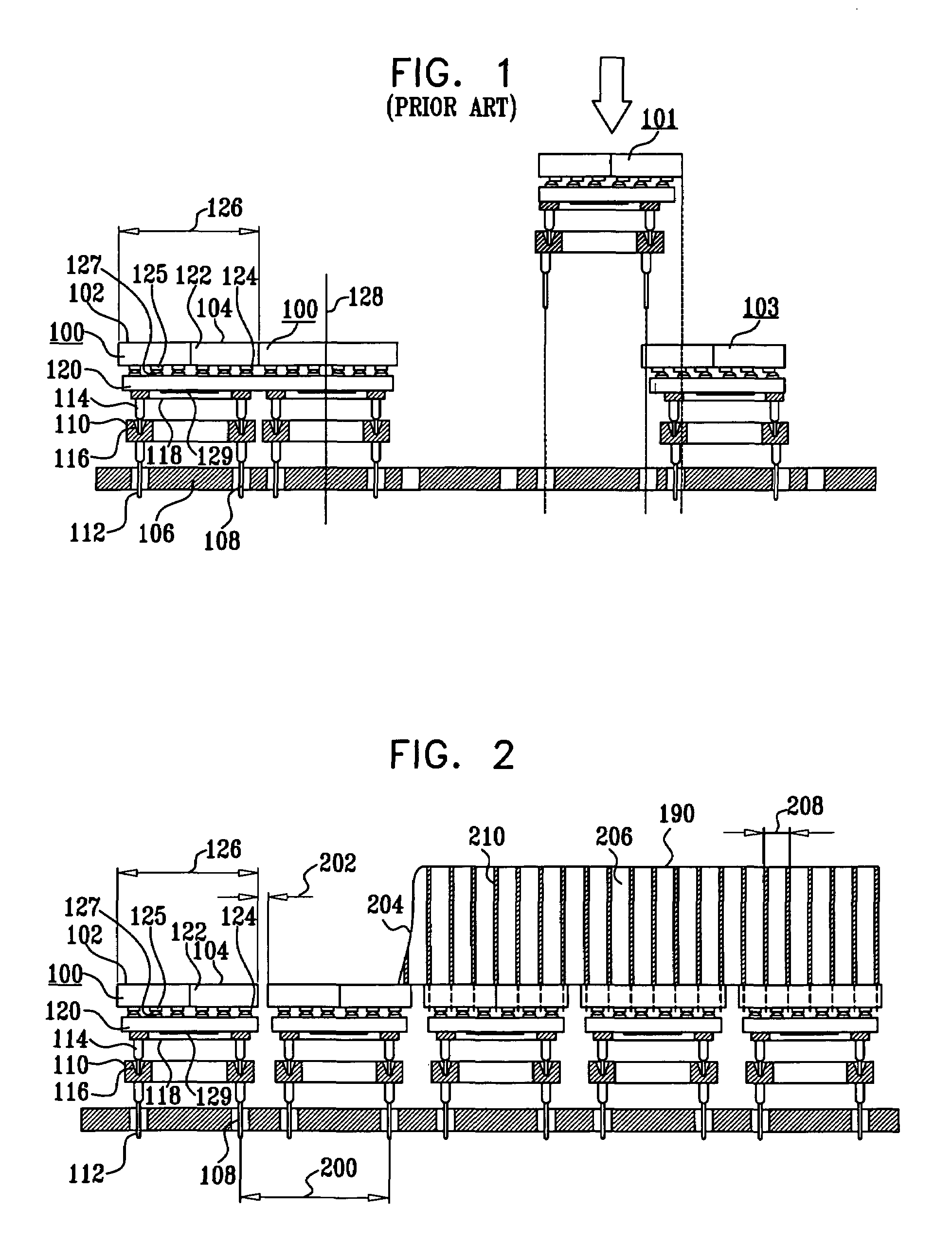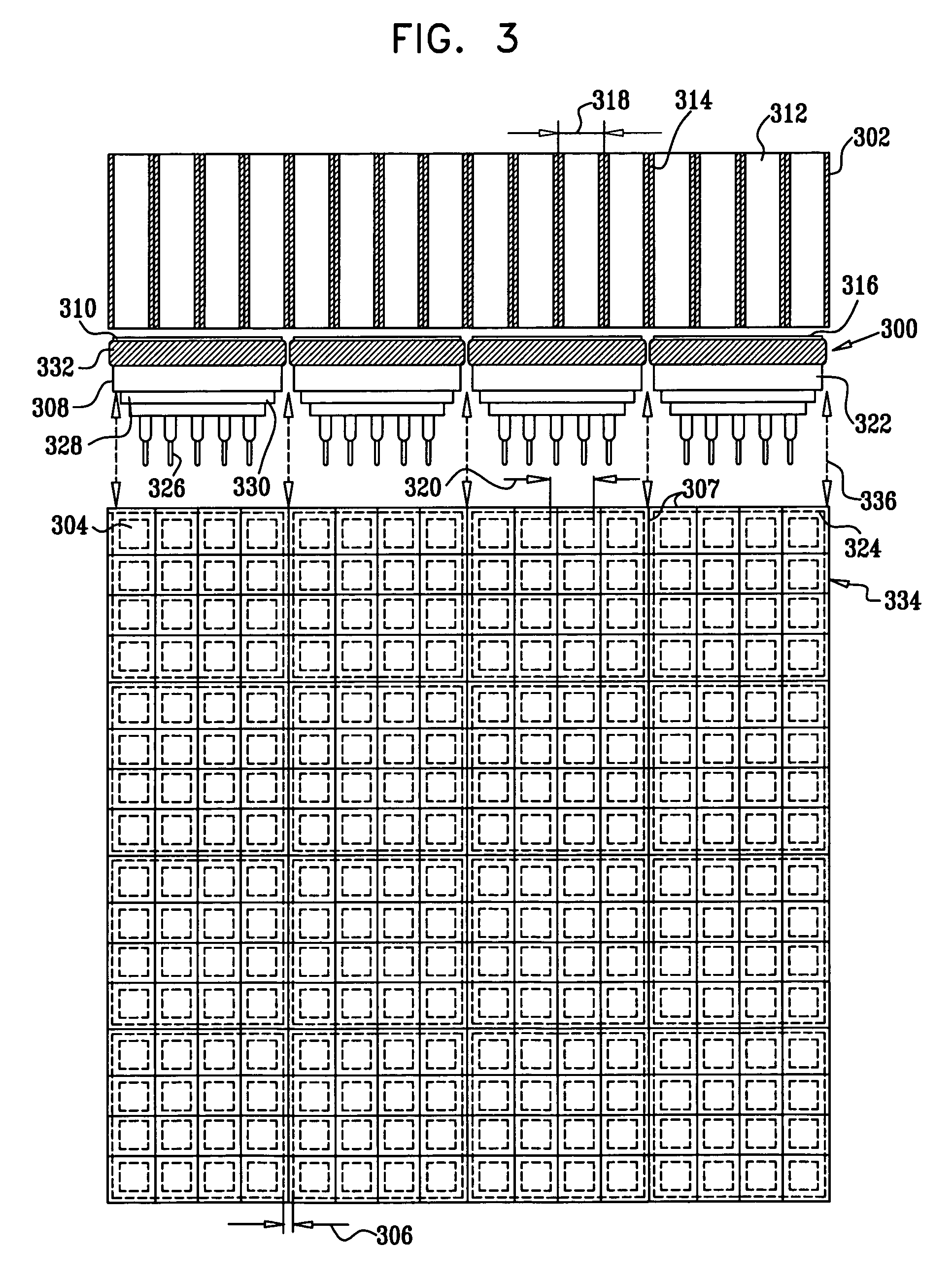Radiation detector head
a detector head and detector technology, applied in the field of radiation detection, can solve the problems of inability to fit side-by-side into the base board, prohibitive cost of such a camera head, etc., and achieve the effect of reducing the deformation of images acquired and constant pixel pitch
- Summary
- Abstract
- Description
- Claims
- Application Information
AI Technical Summary
Benefits of technology
Problems solved by technology
Method used
Image
Examples
Embodiment Construction
[0033]Reference is now made to FIG. 1 which is a schematic cross-sectional illustration from the side of a prior-art detector array constructed according to conventional Z-technology. According to this technology, individual detector modules 100 are tiled by a butting process, to form a focal plane array 102 of cathodes 104. The tiling of modules 100 is preferably achieved by mounting the modules on a Detector Carrier Board (DCB) 106. The DCB 106 is generally made of Printed Circuit Board (PCB) and may include mounting holes 108 either for direct mounting of the modules 100, or alternatively for receiving the pins 112 of mounting sockets 110. Modules 100 are preferably mounted on sockets 110 by inserting their Pin Grid Array (PGA) 114 into mounting holes 116 of sockets 110. PGA 114 is arranged along a further PGA frame 118. PGA frame 118 is attached to carrying plate 120, to which a detector or detectors 122 are bonded by conductive glue 124. The conductive glue 124 electrically and...
PUM
 Login to View More
Login to View More Abstract
Description
Claims
Application Information
 Login to View More
Login to View More - R&D
- Intellectual Property
- Life Sciences
- Materials
- Tech Scout
- Unparalleled Data Quality
- Higher Quality Content
- 60% Fewer Hallucinations
Browse by: Latest US Patents, China's latest patents, Technical Efficacy Thesaurus, Application Domain, Technology Topic, Popular Technical Reports.
© 2025 PatSnap. All rights reserved.Legal|Privacy policy|Modern Slavery Act Transparency Statement|Sitemap|About US| Contact US: help@patsnap.com



